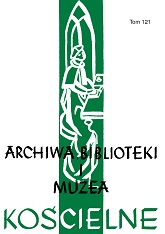Transformation of Assessment of the Neo-Union Movement in Volhynia on pages of the Lviv-Based Dilo newspaper
Transformation of Assessment of the Neo-Union Movement in Volhynia on pages of the Lviv-Based Dilo newspaper
Author(s): Oleksandr FedczukSubject(s): History
Published by: Katolicki Uniwersytet Lubelski Jana Pawła II
Keywords: The Dilo newspaper; Neo-Union; ‘governmental Union’; Roman Catholic Church; Orthodox Church; Greek Catholic Church; Volhynia; Żabcze
Summary/Abstract: In 1924, the Neo-Union project launched by the Catholic Church in order to win over the Orthodox population of the former Russian Empire began to spread in Poland. The next year, the first Neo-Union parish was established in the Volhynian Voivodeship. Since in almost all cases the adepts of the new denomination laid claim to the property of local Orthodox parishes, this led to conflicts, which in turn became the subject of press coverage. One of the most influential Ukrainian periodicals in the interwar Poland was the Dilo newspaper published in Lviv, which, among other things, publicised the religious issues in Volhynia. Starting from 1928, Dilo’s editorial staff began to publish articles on the development of the Neo-Union movement in the adjacent voivodeship. At the same time, the newspaper defended the interests of the Orthodox population, although it was published by and mainly for Greek Catholics. One of the main reasons for that was the exclusion of the Ukrainian Greek Catholic clergy from the process of spreading Neo-Union. In so doing, Dilo controlled by the Ukrainian National Democratic Alliance was fighting for Orthodox voters in Volhynia. Starting from 1931, after Nicholas Charnetsky’s consecration to the episcopacy, Dilo’s editorial staff changed their opinions regarding Neo-Union, which was now recognised as a positive phenomenon devoid of all the faults ascribed to it by this same paper. No more was the Orthodox population of the region regarded as victims of external aggression, while converts were no longer presented as the least moral members of the local community. The assessment of the authorities’ position changed as well. Although in the last years of the Second Polish Republic Dilo grew less interested in the Neo-Union issues, on the whole its editorial policy of that period to a greater extent reflected the established Greek Catholic views on the subordination of Orthodox Ukrainians to the Pope than it had done before 1931.
Journal: Archiwa, Biblioteki i Muzea Kościelne
- Issue Year: 2023
- Issue No: 121
- Page Range: 121-134
- Page Count: 13
- Language: English

